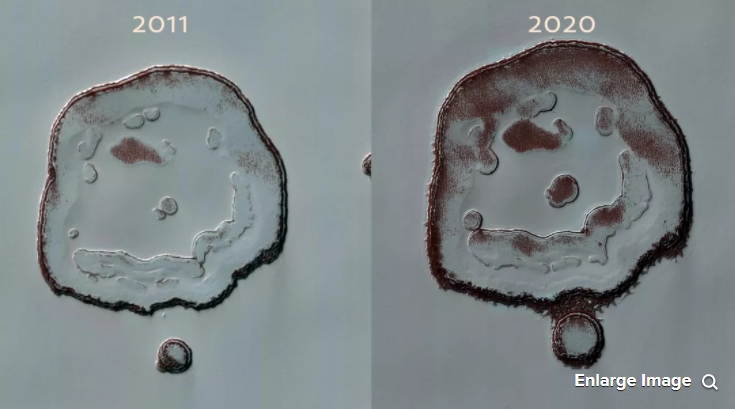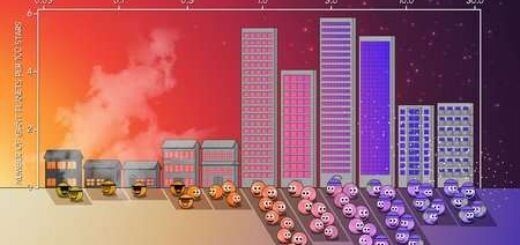NASA spots frosty changes in grinning Mars ‘Happy Face Crater’

Humans love to give fitting nicknames to formations out in space, whether it’s the Crab Nebula or the Penguin and the Egg galaxies. You can see exactly why the “Happy Face Crater” on Mars got its unofficial moniker. It seems to be quite pleased that it’s helping scientists track climate trends over time on the red planet.
The crater is located in the region of Mars’ south pole. That’s a frosty place, but it isn’t frozen in time. The landscape shifts in appearance, as seen by the differences in images taken by NASA’s Mars Reconnaissance Orbiter in 2011 and 2020.
The difference is in the amount of frost covering the ground. “The ‘blobby’ features in the polar cap are due to the sun sublimating away the carbon dioxide into these round patterns,” wrote MRO HiRise camera team member Ross Beyer in a statement Thursday. “You can see how nine years of this thermal erosion have made the ‘mouth’ of the face larger.” Sublimation happens when a solid turns into a gas.
The face’s nose has also transformed, from two distinct circles into one blob. The Mars Reconnaissance Orbiter monitors seasonal changes, but this sort of observation across nearly a decade of time “helps us understand longer term climate trends on the red planet,” said Beyer.
The MRO has been in orbit around Mars since 2006. The spacecraft’s HiRise camera and its science team at the University of Arizona have witnessed all sorts of Martian wonders, from dust devil tracks to an avalanche in action.
The Happy Face Crater is in good company. Last year, the MRO found an impact crater that looked like the grinning face of actor Ed Asner.



 Creators of mankind
Creators of mankind Description of “Tall white aliens”
Description of “Tall white aliens” Where they came from?
Where they came from? About hostile civilizations
About hostile civilizations The war for the Earth
The war for the Earth “Tall white aliens” about eternal life
“Tall white aliens” about eternal life Video: “Nordic aliens”
Video: “Nordic aliens” Aliens
Aliens Alien encounters
Alien encounters The aliens base
The aliens base UFO
UFO Technology UFO
Technology UFO Underground civilization
Underground civilization Ancient alien artifacts
Ancient alien artifacts Military and UFO
Military and UFO Mysteries and hypotheses
Mysteries and hypotheses Scientific facts
Scientific facts


















